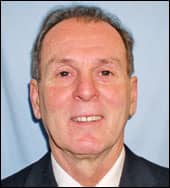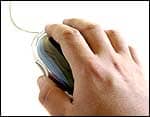by Donald J. Rinchuse, DMD, MS, MDS, PhD; with Sanjivan Kandasamy, BDSc, BScDent, DocClinDen, MOrthRCS; and Daniel Rinchuse, DMD, MS, MDS, PhD
Chewing the facts: Part 2
Editor’s note: This is the conclusion of a two-part article. To read Part 1 go to our April/May issue.
In the 1990s, the evidence clearly pointed toward occlusion and condyle position (CR) having little or no role (perhaps a secondary and associational role) in the development and cause of TMD.1-4 Nonetheless, the “gross” evaluation of a patient’s occlusion was still an integral part of a TMD examination. If occlusion and condyle position have a relatively secondary role, one would think that the need to mount casts on articulators would make less sense then once thought when occlusion and/or condyle position were believed to be the primary cause of TMD. Further, it would seem logical that occlusion and condyle position would not need to be analyzed in a detailed, microscopic manner (with an articulator) as it may have beenwhen these factors were considered the primary causes of TMD? Parenthetically, Lysle Johnston, DDS, MS, PhD, sarcastically wrote about the foolishness of the gnathologic view and CR (retruded): “It could be argued that the progressive modification in the definition of centric relation has done more to eliminate centric slides than 20 years of grudging acquiescence to the precepts of gnathology.”37
“Correct” CR Position
 |
Irrespective of the conflicting evidence, gnathologists continue to argue that one particular CR position is true and correct. Furthermore, they claim that by doing this or that special type of bite registration (Roth power centric), the patients’ condyles will be positioned into a supposed ideal anterior-superior CR position. To wit, “Power centric registration refers to the use of the patient’s power closure muscles (masseter, medial pterygoids, and superior head of the lateral pterygoids) to rest the condyles as closely as possible to CR with the condyles centered transversely and seated against the articular discs of the slope of the articular eminences without dental interference.”38 However they offer no MRI data to support where the condyles are located as a result of the “power centric bite registration.” They seem to have the attitude that, “If I say the condyles are in this or that position as a result of this or that gnathologic bite registration, they must be there because I have been doing it this way for many years.”
Nuelle and Alpern wrote about the absurdity of gnathologic bite registrations: “No dentist or orthodontist is knowledgeable enough to know the proper three-dimensional position for two asymmetrically angulated condyles, irregularly and individually suspended in a polycentric hinge joint …”39 Also, the records taken by gnathologists are taken in static test positions; subjects are never asked to function (chew, swallow, and so forth).
Measuring the Difference
Mohl argued that the sensitivity and specificity of mounted casts in the diagnoses of TMD is poor.26 Further, orthodontic gnathologists offer little or no science and evidence to support the view that doing articulator mountings improves the stomatognathic health of their patients. In fact, one of the most reliable and valid reports by the orthodontic gnathologic camp of the benefits of articulators only suspects that the difference between gnathologic and nongnathologic diagnostics is perhaps 1 mm to 2 mm, and this is only in the vertical dimension.40 The authors recognized that a health benefit of using an articulator (and gnathologic registrations) to deduce several millimeters of vertical discrepancy has yet to be demonstrated. Kulbersh et al40 wrote: “Its [vertical discrepancy] implications with regard to patient’s stomatognathic functional health are not clearly research documented …” And, the accuracy and correctness of this 1 mm to 2 mm vertical difference between mounted and unmounted casts can be challenged for numerous reasons, one of which is that method and measurement errors were never factored against the 1 mm to 2 mm vertical discrepancy finding.1
Although the findings in Cordray’s41 recent study appeared to support the view that the use of articulators has utility in orthodontic diagnoses, the study was of such limited scientific quality that its findings and conclusions are very much debatable. The independent variables were confounded and comingled so that the effect of “deprogramming” versus no deprogramming could not be ascertained. As the study was designed, deprogrammed gnathologic records were compared with nongnathologic records. But in order to evaluate the true influence of deprogramming (if there was one), a third group would have had to have been added: a gnathologic records group without deprogramming. Further, although Cordray stated that the gnathologic bite registration was taken without manipulation of the subjects’ mandibles, there is clear evidence in the methodology that this was not the case. Next, there was no explanation concerning how the nongnathologic centric records were taken. In addition, the Cordray data exhibited large ranges and standard deviations that were not discussed in the paper. Also, Cordray did not evaluate the error due to the use of average estimates of condylar hinge-axis. Last, Cordray did not mention and then compare his data with the contradictory findings from Kulbersh and colleagues42-43 and Ellis and Bension44 published in 2003.
How Articulators Work
Articulators do not functionlike the human TMJ. As Johnston sarcastically noted, “Gnathology is the science of how articulators chew.”37 Articulators are built on the false premise of a “terminal hinge axis.”1 It was postulated by Posselt45 some 50 years ago that in the initial 20 mm of opening and closing, the mandible only rotates and does not simultaneously translate (move downward and forward). Posselt’s theory of a terminal hinge axis was predicated on the old idea of a retruded CR position, and Posselt’s recordings were made when the mandible was constrained by distal pressure applied to the chin during opening and closing. Posselt’s theory made more sense in the days when CR was believed to be a retruded condyle position and the means to record and obtain it was by applying chin pressure. The truth is that the TMJ condyles simultaneously and instantaneously rotate and translate in the initial opening and closing.46
Also, it is known that the type of occlusion a person possesses is not as important in regard to stomatognathic health as how a subject uses or misuses his occlusion. You can find subjects with the most gorgeous static and functional occlusions having severe TMD symptoms, while subjects with the most horrendous occlusions have no TMD. Further, the teeth do not normally contact very often in a day, and these forces are typically not destructive. It appears to be an axiomatic conclusion in dentistry that the most prolonged, destructive, and harshest occlusal forces of all are those occurring during parafunction-clenching, but more importantly, horizontal bruxing movements.47 If this is so, then it is argued that the gnathologist would be obliged to record and evaluate parafunctional movements through mounted casts. And as known, gnathologists do not record parafunctional movements.
Although human chewing patterns are typically “tear-drop” and elliptical in shape, some are more vertical and others are more horizontal. And there may be a relationship between chewing-pattern shape, craniofacial structure, and static and functional occlusions.48 How do the precepts of gnathology accommodate a patient’s unique chewing-pattern shape in the analysis of occlusion/CR position and articulator mountings? In addition, articulators with single centric hinges produce only two paths of straight-line movement, whereas patients have infinite numbers of unique multiple attack paths as the teeth function.9
In closing, let me say that there are many more reasons why orthodontic articulator mountings are a flawed and fruitless exercise.1-4 Perhaps the most critical blow to orthodontic gnathology was the finding years ago that orthodontics does not cause TMD. Further, orthodontic gnathology’s early claim in support of retruded CR position was proven to be fallacious. Certainly, the information gleaned from national conferences and systematic reviews on the topic of TMD should have prompted orthodontic gnathologists to reexamine their experienced-based view. For sure, it is the responsibility of those recommending a certain procedure, technique, test, or instrumentation to provide the proof of a benefit-and this includes orthodontic gnathology. So far, we have little or no credible evidence to support the use of articulators in orthodontics, with the most outspoken proponents having self-serving and/or financial interests. Orthodontic gnathologists seem to have lost an appreciation for critical thinking and discernment, and appear to be so convinced of their experience-based views that the conflicting facts just don’t matter anymore. However, if orthodontic gnathologists desire to be credible members of the health professions, they must emerge from the dust and climate of empiricism and abandon views that are based on rhetoric, emotionalism, and anecdotes, and adopt an evidence-based modus operandi for clinical practice.
References
- Johnston LE Jr. Fear and loathing in orthodontics. Notes on the death of theory. In: Carlson DS, ed. Craniofacial Growth Series. Ann Arbor: Center for Human Growth and Development; University of Michigan; 1990, 75-91.
- Utt TW, Meyers CE Jr, Wierzba TF, Hondrum SO. A three-dimensional comparison of condylar position changes between centric relation and centric occlusion. Am J Orthod Dentofacial Orthop. 1995;107:298-308.
- Nuelle DG, Alpern MC. Centric relation or natural balance. In: Alpern MC, ed. The Ortho Evolution-The Science and Principles behind Fixed/Functional Splint Orthodontics. Bohemia (NY): GAC International; 2003, 37-47.
- Kulbersh R, Dhutia M, Mavarro M, Kaczynski R. Condylar distraction efftcs of standard edgewise therapy versus gnathologically based edgewise therapy. Sem Orthod. 2003;9(2):117-127.
- Cordray FE. Three-dimensional analysis of models articulated in the seated condylar position from a deprogrammed asymptomatic population: A prospective study. Part I. Am J Orthod Dentofacial Orthop. 2006;129:619-630.
- Klar NA, Kulbersh R, Freeland T, Kaczynski R. Maximum intercuspation-centric relation disharmony in 200 consecutively finished cases in a gnathologically oriented practice. Sem Orthod. 2003;9(2):109-116.
- Kulbersh R, Kaczynski R, Freeland T. Orthodontics and gnathology. Sem Orthod. 2003;9:93-95.
- Ellis PE, Benson PE. Does articulating study casts make a difference to treatment planning? J Orthod. 2003;30:45-49.
- Posselt U. Studies in the mobility of the human mandible. Acta Odontol Scand. 1952;10 (Supplement 10):1-160.
- Lindauer SJ, Sabol G, Isaacson RJ, Davidovitch M. Condylar movement and mandibular rotation during jaw opening. Am J Orthod Dentofacial Orthop. 1995;107;573-577.
- Shulman J, Deas DE, Mealey BL, Harrel SK, Hallmon WW, Numm MM. Letters: Occlusal discrepancies. J Am Dent Assoc. 2007;138:30-32.
- Gerstner GE, Marchi F, Haerian D. Relationship between antero-posterior maxillomandibular morphology and masticatory jaw movement patterns. Am J Orthod Dentofacial Orthop. 1999;115:256-266.
 |
| Whatis your opinion about articulators in orthodontics? Let us know by contacting us at Orthodontic Products. |
Donald J. Rinchuse, DMD, MS, MDS, PhD, is a clinical professor of orthodontics at the University of Pittsburgh School of Dental Medicine and is also in private practice in Greensburg, Pa. He is a Diplomate of the American Board of Orthodontics and has published extensively with many of his articles dealing with the topic of occlusion/TMJ. He can be reached at
This is Part 2 of a two-part article. Part 1, as well as references and all the author bios, can be found in the April/May issue.









